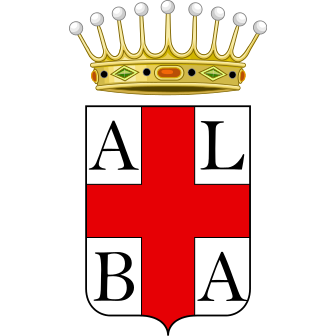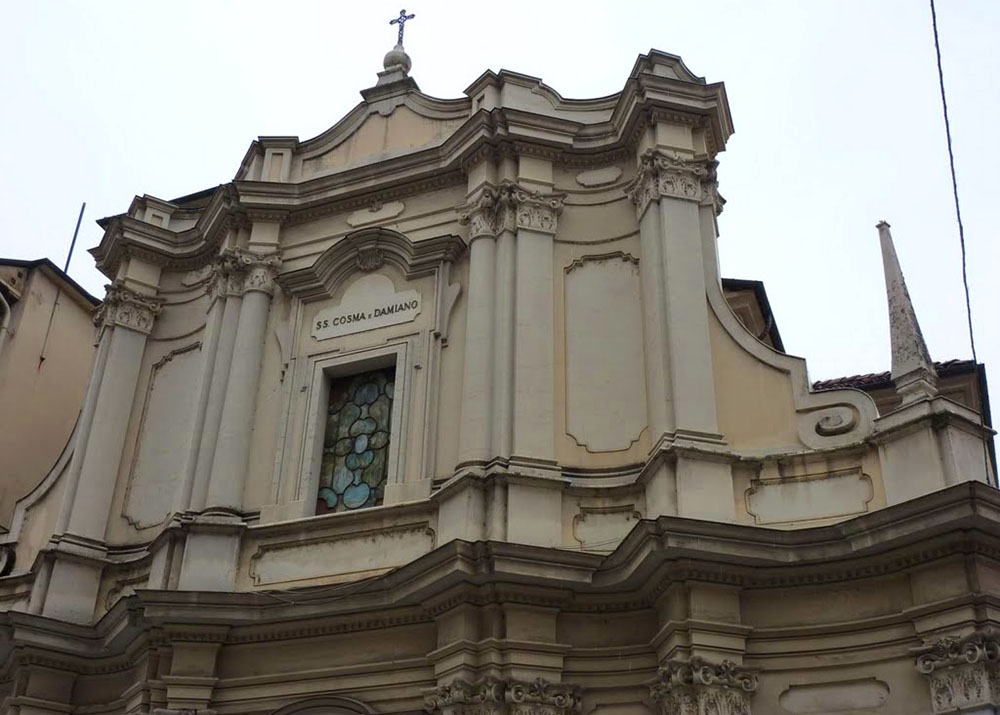
Business Hours
Contacts
Closing Day
Holidays
The titular martyr saints of the sacred building, Cosmas and Damian, are two brother physicians who lived between the third and fourth centuries AD.
Built on the remains of Roman walls and pavements, the church is of very ancient origin; in fact, it is found already mentioned in 12th-century documents.
It was then completely rebuilt in the 1700s from the foundations, and the bell tower was added in the same years.

The parish church of Ss. Cosmas and Damian

TheHistory
The parish church of Ss. Cosmas and Damian
In 1163 there is a record-as reported by the Alba scholar Giovanni Vico-of a canonical cantor of the cathedral, named Borghetto, who was invested with the parish of Ss. Cosmas and Damian, which depended on the chapter of canons
A meeting of the General Community Council was held in the sacred building in 1234. Other documents from the Rigestum Comunis Albe, also from the same century, confirm meetings of the city council "in ecclesia sancti damiani".
Additional thirteenth-century acts are remarkable: 1256 - in a document, reported in Rigestum, "actum in porticu ecclesiae Sancti Damiani" is recorded; 1297 - from a document in the Capitular Archives, interpreted by scholar Giuseppe Vernazza, we learn that the Chapter of canons appointed priest Antonio, son of Simonetta di Gorzano, as rector and minister of the church of S. Damiano. Again from the aforementioned Rigestum we learn that, in the same sacred building, George I and Andrea marquises of Ceva obtained the albese citis in 1252.
There are also interesting fourteenth-century documents in which the church in question is mentioned: 1316 - in a document in the Chapter Archive Iacopo, minister and rector of the church of S. Damiano; 1325 - in the general register of the Diocese of Alba contained in the Synod known as the "Isnardi Constitutions" from the name of the then-reigning bishop of Alba, Franciscan Guglielmo Isnardi da Civitella, the "Ecclesia sanctorum Cosmi et Damiani de Alba" appears among the "Capelle Capituli Albensis"; 1330 - in a document from the Capitular Archives (testamentary) the cemetery of S. Damiano; in addition, the sacred building receives various legacies from Verdina, widow of Vinado di Cerretto;
1345 - another deed in the Chapter Archives is notarized in the aforementioned cemetery; 1380 - from a document cited by the aforementioned Vernazza the church, governed by Archpriest Neveis, still appears to be subject to the Chapter of the canons of the Cathedral of St. Lawrence. The same situation of dependence is confirmed during the 15th century.
In 1441 Msgr. Alerino Rembaudi bishop of Alba entrusted and mandated presbyter Antonio de Henriozio, rector of the church of Ss. Cosmas and Damian, to absolve on his part presbyter Stefano Rubo provost of Alba, requesting to be absolved from the excommunication he had incurred by being absent beyond the dictates contained in the synodal constitutions.
The aforementioned presbyter Anthony immediately reported to the prelate that he had complied with his request.
The Modern Age
During the sixteenth century, the sacred building is repeatedly visited by bishops and apostolic visitors.
In 1573 the bishop of Alba Msgr. Leonardo Marino, in a pastoral visit, ordered that all the altars except the high altar be demolished, deeming them no longer adequate. In addition, the prelate ordered that the Crucifix be removed from its location, that it be placed in the sacristy, and that it be replaced in the church by another one of better appearance to be placed on the beam above the high altar.
Bishop Gerolamo Regazzoni of Bergamo (active at the Council of Trent), on an apostolic visit in 1577, stipulated that this parish, as well as those of S. Giovanni and S. Maria del Ponte, be limited to distributing only communions and performing burials, leaving the other offices of care of souls to the archpriesthood of the cathedral.
In 1590 the bishop of Alba Msgr. Alberto Capriano, on a pastoral visit, gave orders that the tombs in the ancient church be sealed and that the roofing slabs not protrude beyond the floor level.
Further pastoral visits of prelates to this cultic seat are mainly documented in the years 1634, 1643, 1683 and 1698.
Renovation work on the church was requested by the bishops in 1634 and 1643; so too were some additions ordered in 1698.
The eighteenth century
In the second half of the 18th century, the complete reconstruction of the sacred building took place.
Between 1760 and 1762 the church was rebuilt from the foundations by the will of Canon Canon Canon Giuseppe Maria Caratti expressed in 1759, based on the design of architect Carlo Francesco Rangone, count of Montelupo Albese.
Between 1780 and 1786, the bell tower was built to the design of Carlo Emanuele Rangone (son of Carlo Francesco).
In 1788, in his own will, Count Carlo Francesco Rangone earmarked 120 liras "for one year to cover the bell tower with tolla".
The nineteenth century
In 1806, during the Napoleonic Empire, a register of the parish's fixed assets and income was compiled.
In 1820, by decree of the bishop of Alba Msgr. Giovanni Antonio Nicola, the parish church of Ss. Cosmas and Damian became completely independent from the chapter of canons of the cathedral.
The Exterior
The Baroque church of Ss. Cosmas and Damian is inserted into the curtain road of Vittorio Emanuele Street (the "Via Maestra") almost without apparent volumetric value.
The facade alone is set toward the urban street, contrasting diagonally with the Victorian facade of St. Mary Magdalene, both constituting significant edges of the related crossroads.
The main façade of the church of Ss. Cosmas and Damian is characterized by a Baroque profile that tends toward sinuosity; although the original 18th-century design by architect Rangone appears to have been re-modeled in 1893 to the design of Genoese engineer Adriano Craffonara, partly masking its physiognomy, which was in exposed brick.
The facade is vertically furrowed by two overlapping orders of pilasters of Corinthian type.
A horizontal cornice cuts the surface into two wide sectors. In the one below is the large portal surmounted by a stucco decoration, flanked by two smaller side ones.
In the upper sector, in the center between Ionic-type coupled pilasters, is the rectangular window, framed in stucco and underlying anepigraph dedicated to the two titular saints.
The plant and the vaults
The body of the church has a longitudinal plan (reversed from the opposite orientation of the pre-existing cultic site) with a single nave, interspersed symmetrically with two side chapels.
The vault system is quite complex: barrel vaults alternate with elliptical dome elements. The entire ensemble is decorated with refined stucco.
The bell tower
The bell tower, erected later, shows already neoclassical forms: projecting cornice toward the top, pilasters, oculi and narrow openings in the walls.
Visit Duration
Ticket Price
Audioguides
Guided Visit
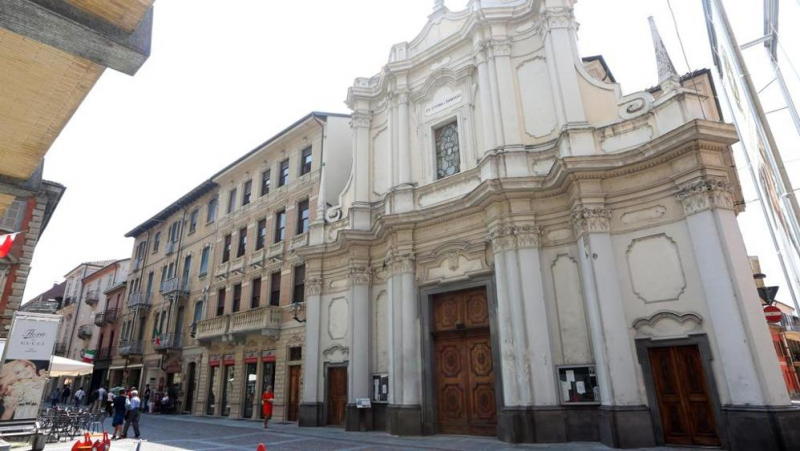
It is characterised by a baroque profile and is set towards the city street.
The Interior
The high altar shows only part of its 18th-century conformation, in polychrome marbles in muted colors, having been dismembered.
Its components are split and still visible in the chancel. One such element and part of the balustrade show the carved coat of arms of the Capriata nobles.
The paintings of the high altar and vaulting
The altarpiece above is a 1761 painting by Claudio Beaumont of Turin. It depicts an archangel showing an image of the Annunciation to theVirgin Mary to the titular Saints Cosmas and Damian, as well as to a sick man attended by them; so that the two venerable men plead for the healing of the seriously ill man.
In the foreground, an angel carries a palm tree branch as a symbol of their martyrdom.
The paintings on the vault of the church date from 1877; in the same year the decorative stuccoes were gilded. In 1921 the Alba painter Fedele Finati restored such pictorial and plastic works.
The works of the side altars
The altars in the two side chapels are no longer the 18th-century ones, nor are their devotional images(Our Lady of Sorrows with Christ Deposed from the Cross, St. Anne).
In fact, in 1892 the eighteenth-century altarpiece on the sacred side mensa of Our Lady of Sorrows was removed and, at the expense of the Company of the same name, replaced with a niche surrounded by a gilded frame in which the processional statue of the Virgin Mary is placed.
A 1961 painting with the same Christological subject by Emilio Prunotto is placed on the central wall.
On the other side altar, dedicated to St. Anne (the mother of the Virgin Mary), the 18th-century altarpiece, attributed to Pietro Paolo Operti of Braid, is visible. It depicts the Eternal Father, the Holy Family and Saints Anne and Joachim.
In 1926 the new organ, made by the Milanese firm Natale Balbiani & figli, was inaugurated.
N° of floors
Park
Visit Duration
Ticket Price
Audioguides
Guided Visit
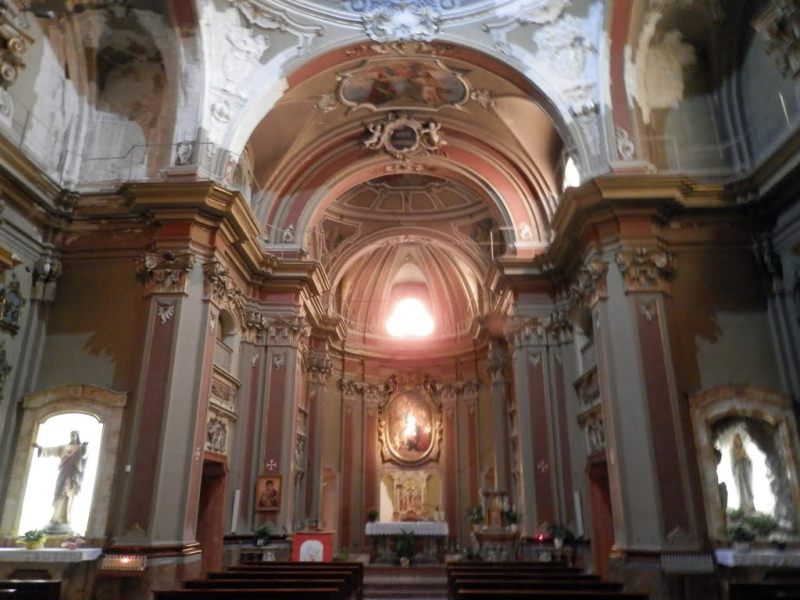
The paintings on the vault of the church date back to 1877.

The parish church of Ss. Cosmas and Damian
Via Vittorio Emanuele, 30, 12051 Alba, CN, Italia
Directions ↝

The Castle of Barolo
Castello Comunale Falletti di Barolo, Piazza Falletti, Barolo, CN, Italia
Discover ↝

The Serralunga d'Alba Castle
Castello di Serralunga d'Alba, Via Castello, Grinzane Cavour, CN, Italia
Discover ↝
Are you planning a trip in the Langhe region?
Let us help you design the perfect vacation, and live your stay like a true insider
Free
Service
Ask us
For advice
Free Service
Ask us
For advice
Free Service
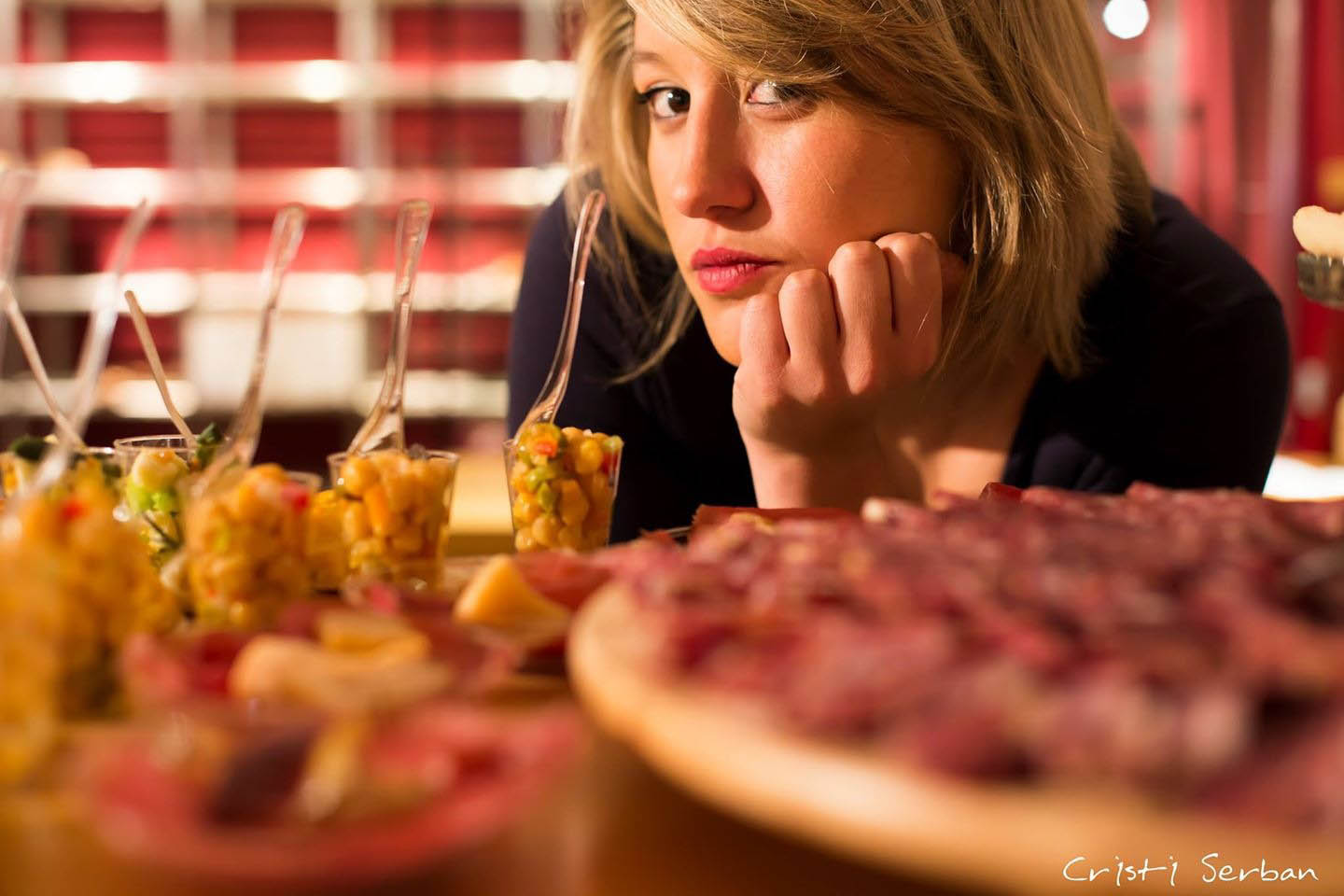
Fill in the form
reporting your interests and preferences
Receive our suggestions
directly into your inbox
And if it's not enough
we'll design a personalized trip!





